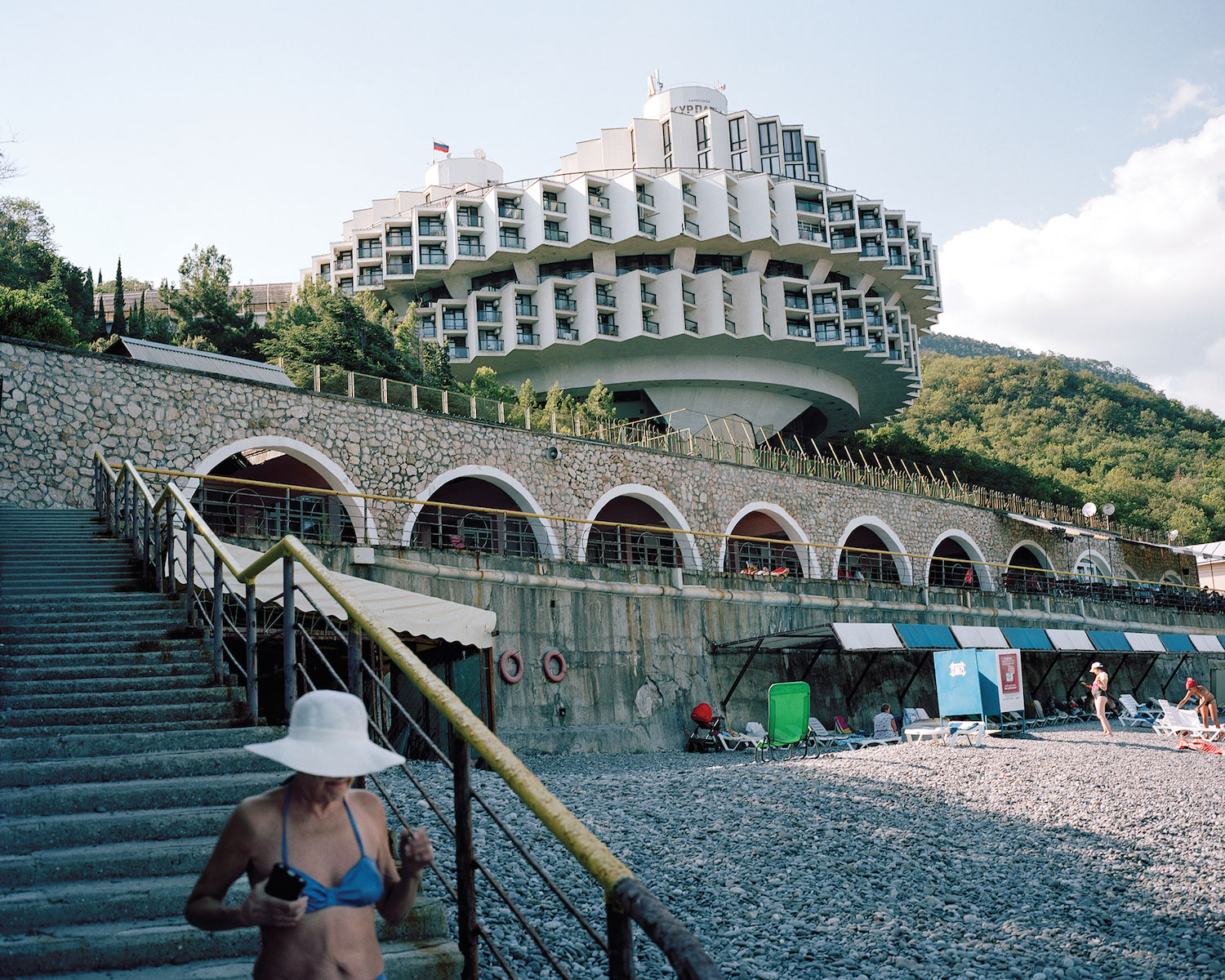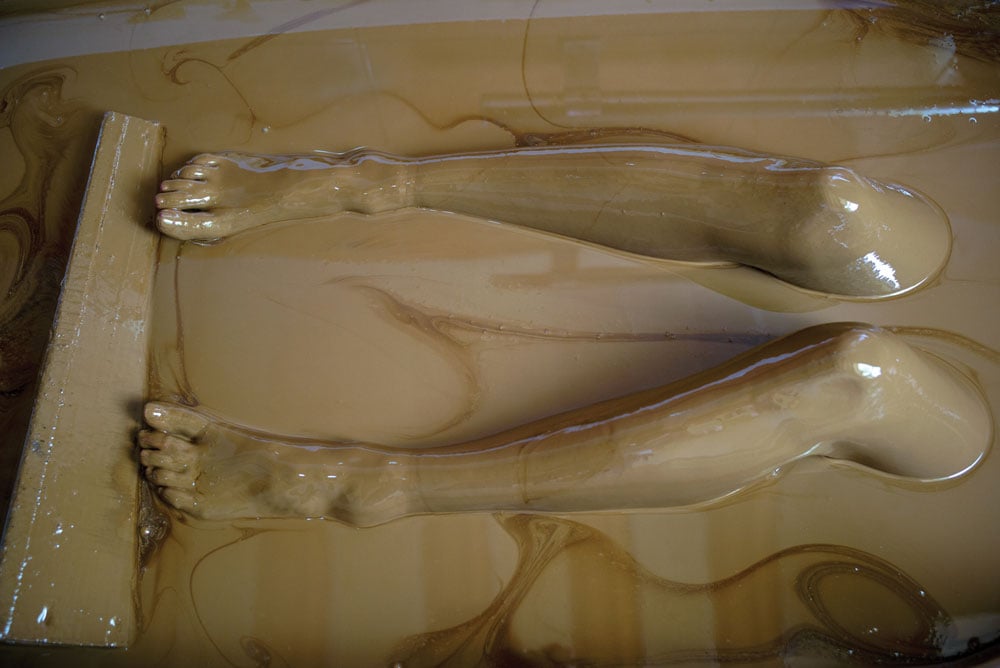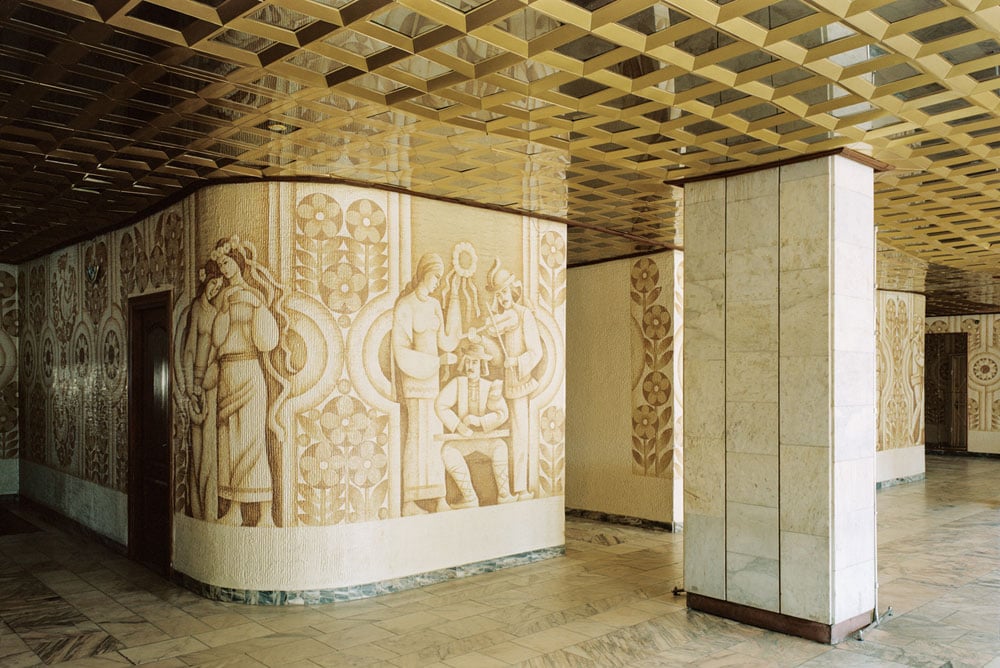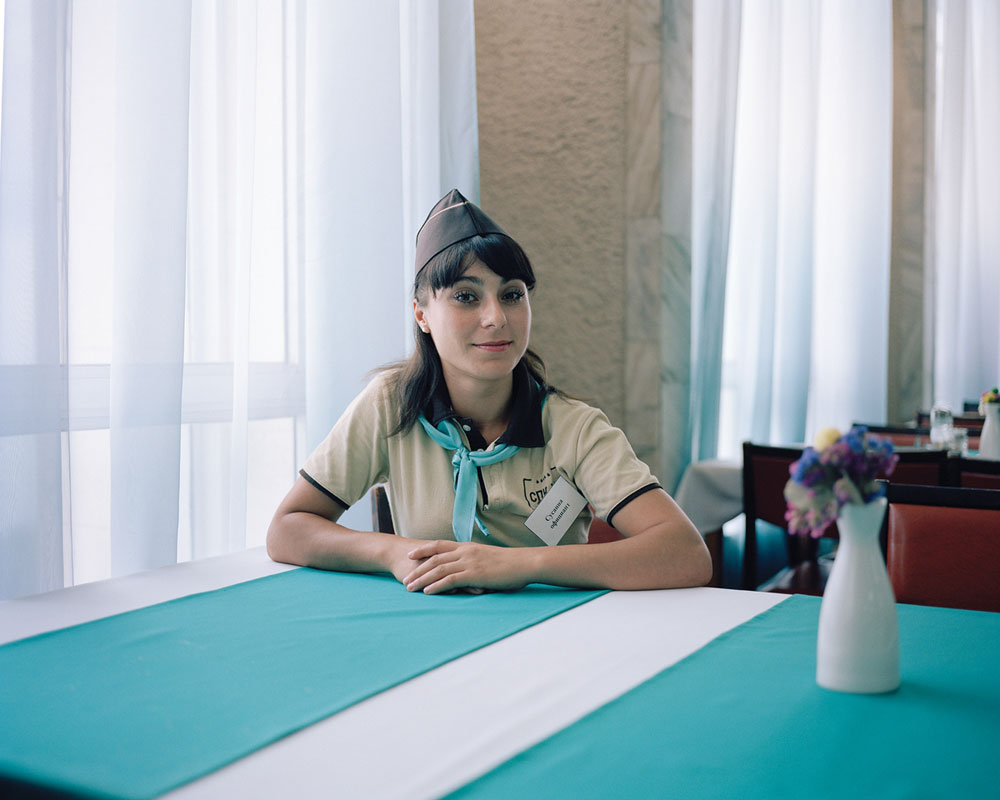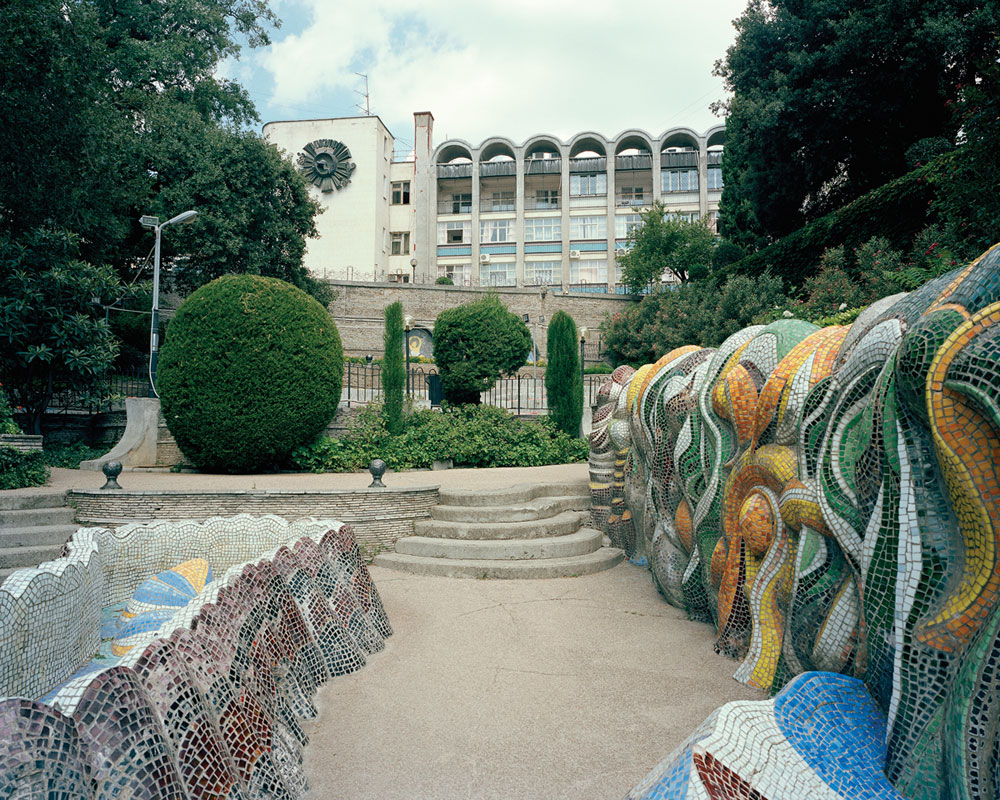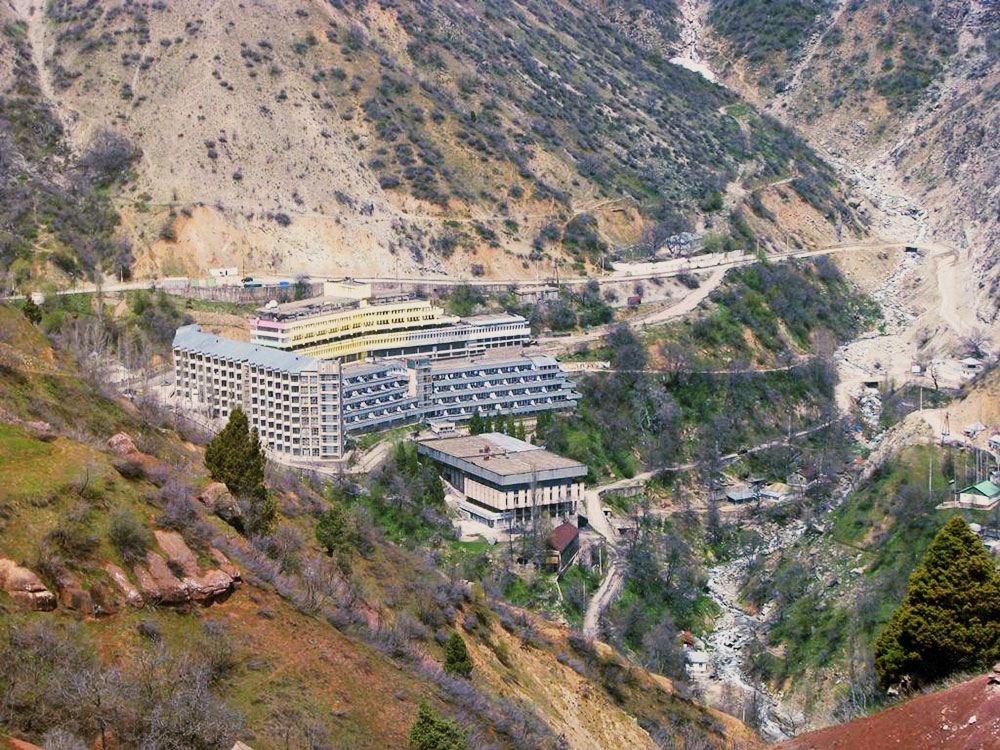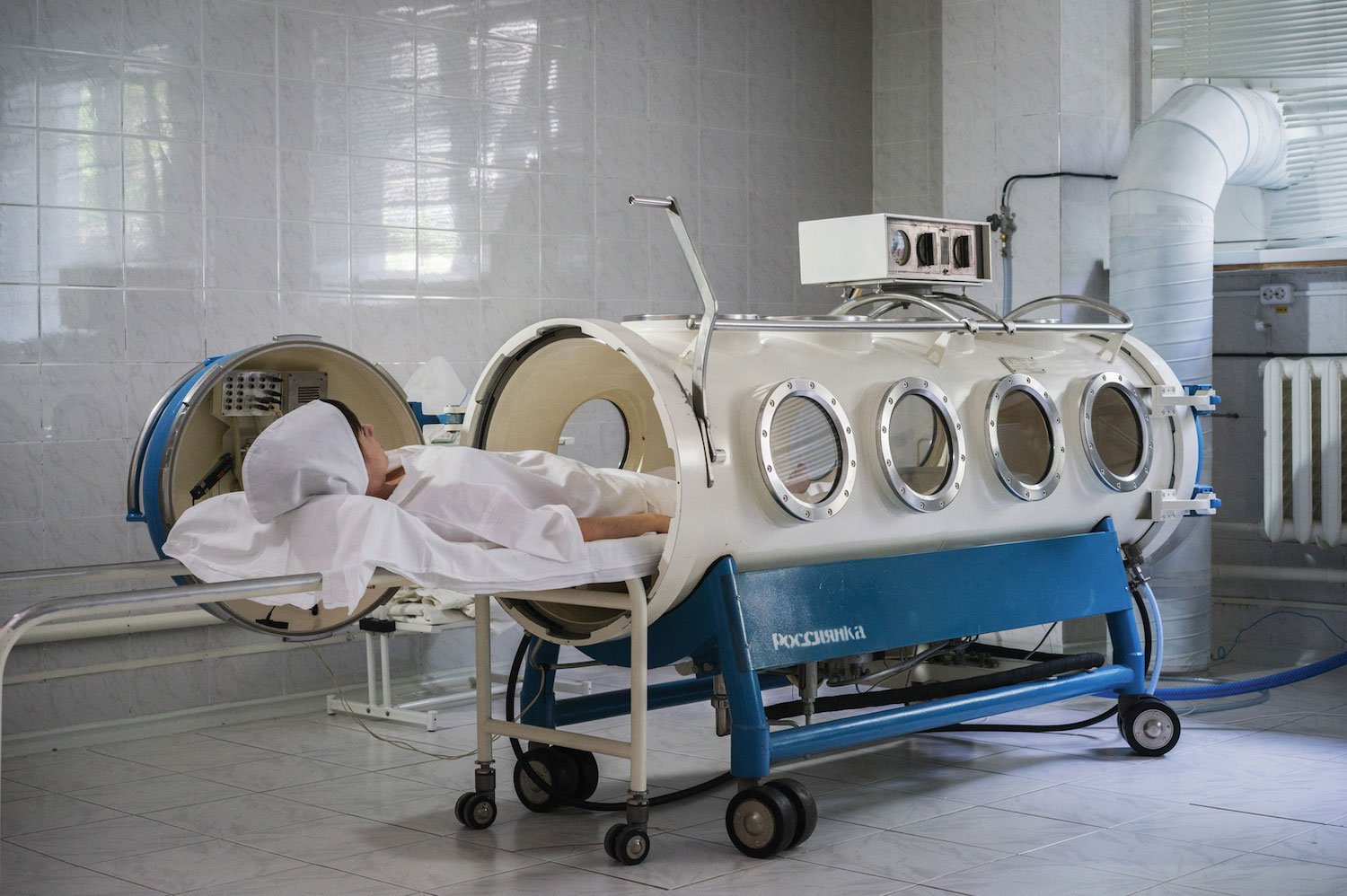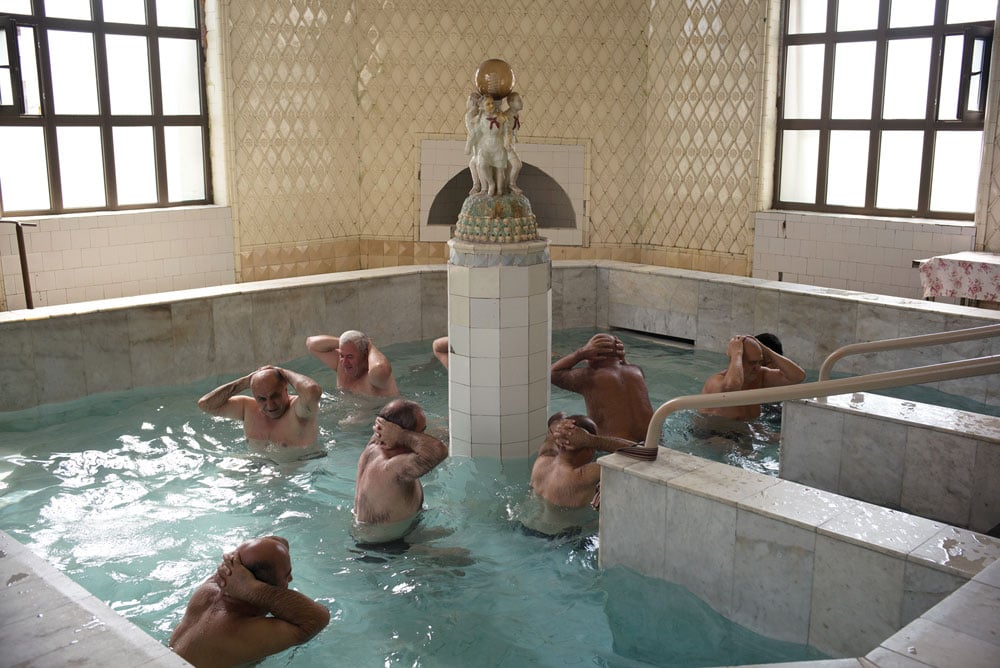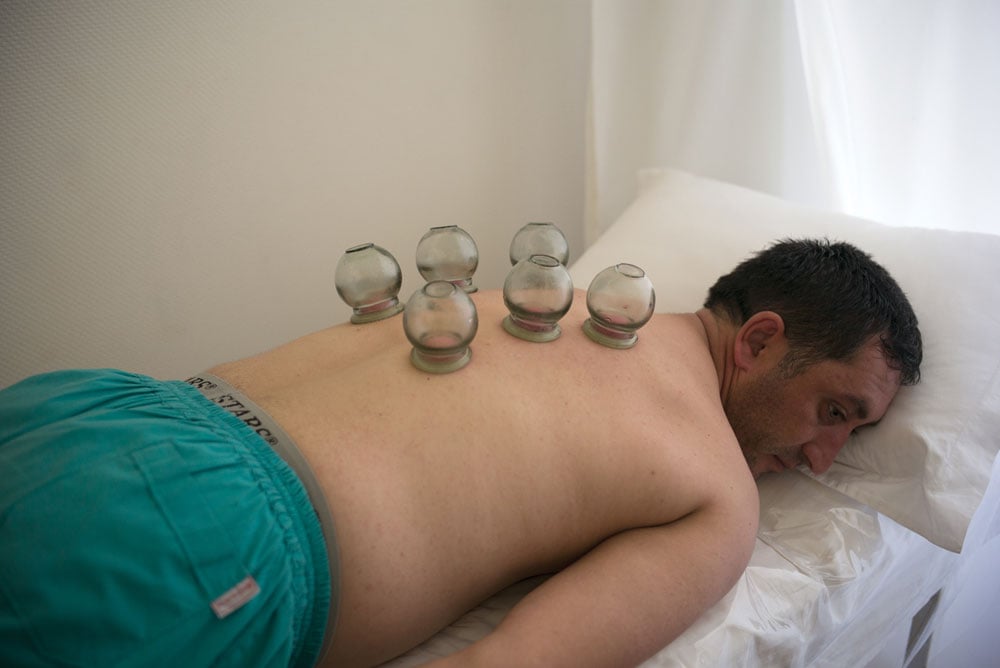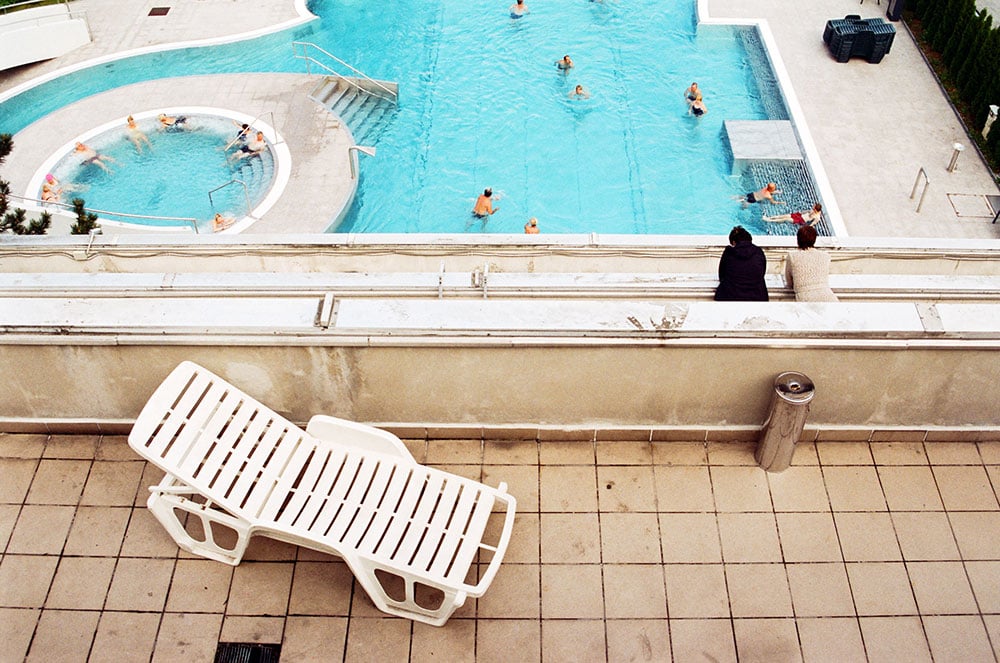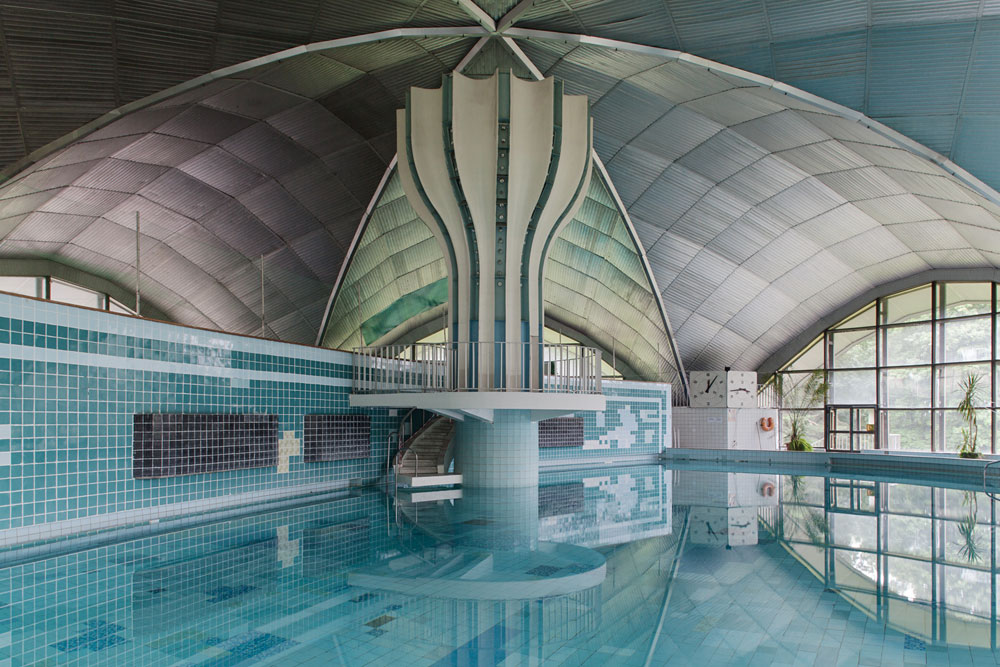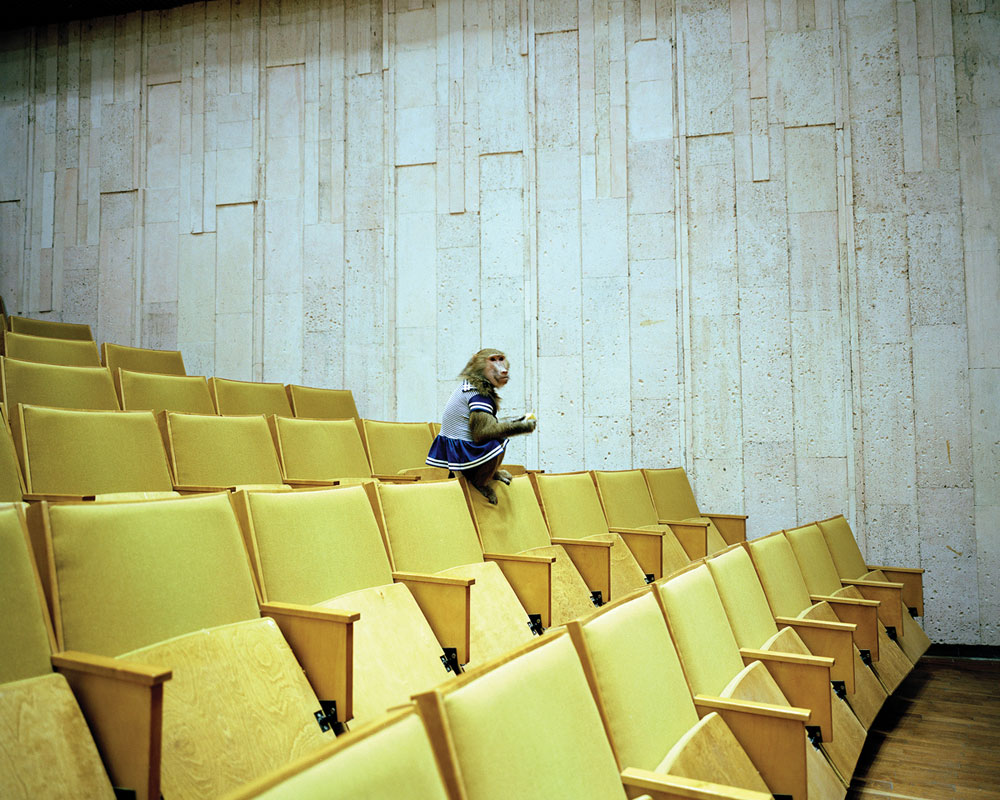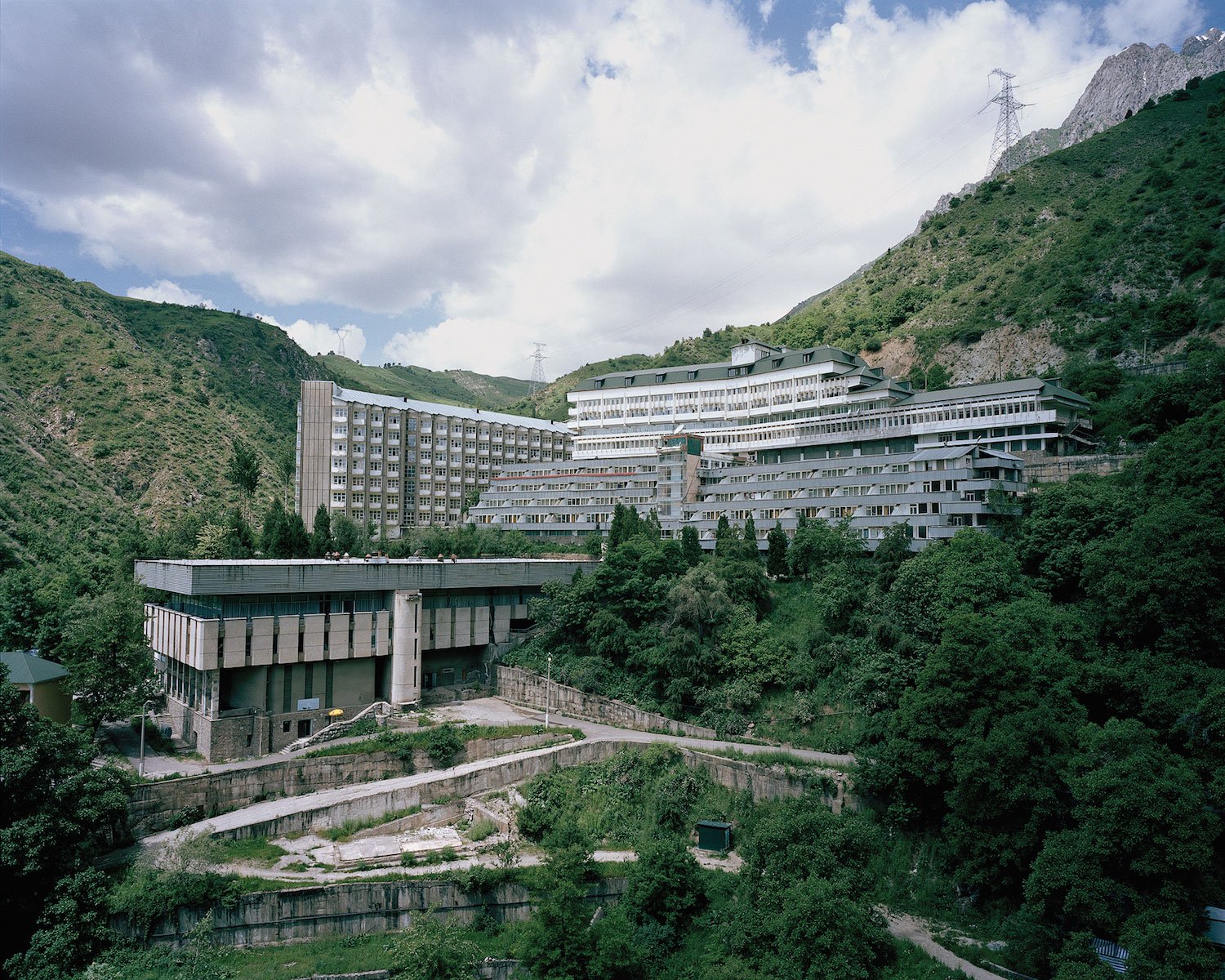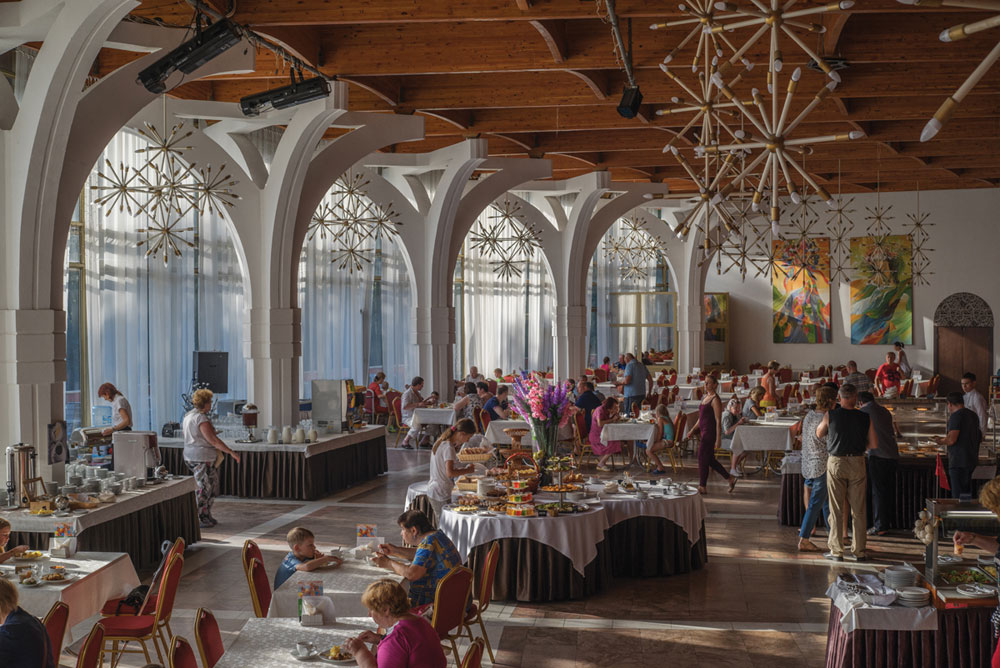Holidays in Soviet sanatoriums: the weird and wonderful wellness palaces of the USSR
It wouldn't be a Soviet holiday without crude-oil baths, radon-water douches and regulated diets
Visiting a Soviet-era sanatorium is like stepping back in time. Vestiges of another age linger all around — in fragments of decades-old wallpaper stubbornly clinging to walls, or colourful mosaics glorifying the Soviet worker. Plants of all shapes and sizes inhabit every corner, while spartan guest rooms with single beds evoke a bygone era when guests travelled to sanatoriums alone. Mealtimes too are unforgettable, with food in more shades of beige than you ever thought possible. Then, of course, there are the treatments: from crude-oil baths and radon-water douches to underground salt caves and magnetic sands, these sanatoriums offer a dizzying introduction to a whole new world of medicine.
Every aspect of sanatorium life, from sleep to sunbathing, was controlled and monitored by staff in accordance with a strict schedule
Soviet-era sanatoriums are among the most innovative, and sometimes most ornamental, buildings of their time – from Kyrgyzstan’s Aurora, designed in the shape of a ship, to Druzhba, a Constructivist masterpiece on the Crimean shore that sparked rumours that a flying saucer had landed. Such buildings challenge the standard notion that architecture under communism was unsightly and drab. Sprinkled across the post-Soviet landscape, they survive in varying states of decay, with relatively few still in operation. But at their peak, these sanatoriums were visited by millions of citizens across the USSR each year, courtesy of the state.
The issue of free time greatly engaged Soviet leaders as they set out to define and shape the New Soviet Man. Unlike western vacations, which Soviets perceived as vulgar pursuits characterised by conspicuous consumption and idleness, holidays in the USSR were decidedly purposeful. Their function was to provide rest and recuperation, so citizens could return to work with renewed diligence and productivity. The 1922 Labour Code prescribed two weeks’ holiday a year for many workers and under Joseph Stalin the “right to rest” was enshrined in the 1936 constitution for all citizens of the USSR. In line with Stalin’s First and Second Five-Year Plans, writes Johanna Geisler in The Soviet Sanatorium: Medicine, Nature and Mass Culture in Sochi, 1917–1991, rapid development of the industry meant that by 1939, 1,828 new sanatoriums with 239,000 beds had been built.
It was against this backdrop that the sanatorium holiday was born. A cross between medical institution and spa, the sanatorium formed an integral part of the Soviet political and social apparatus. They were designed in opposition to the decadence of European spa towns such as Baden-Baden or Karlovy Vary, as well as to the west’s bourgeois consumer practices. Every detail of sanatorium life, from architecture to entertainment, was intended to edify workers while encouraging communion with other guests and with nature. The approach was straightforward, advocating maximum rest, evidenced by the addition of a few extra pounds on departure, which was considered a sign of robust health. This was believed to deliver maximum post-sanatorium productivity, a notion that has persisted to this day. Writing in Club Red: Vacation Travel and the Soviet Dream, Diane Koenker notes that the Soviets were proud of their progressive treatment of workers; the French, wrote Health Commissar Nikolai Semashko in 1923, had only one place of rest: the cemetery.
Some sanatoriums provided regional treatments such as grape therapy in Crimea or kumis (mare’s milk) in Central Asia
Eligible individuals received putevki, or vouchers, to stay at particular sanatoriums for a specified period of time, either at subsidised rates or for free. In principle, industrial workers and those with medical conditions were granted priority, though in practice, the best accommodation usually went to those with money and connections. To varying degrees, the voucher system still exists across the post-Soviet sphere, with both governments and corporations providing putevki to individuals for subsidised sanatorium visits. While most Georgian sanatoriums are for fee-paying guests, those in Belarus accept a high proportion of guests with putevki as part of the Belarusian government’s social support fund.
Soviet holidaymakers would start with a visit to the resident doctor, who would draw up a tailor-made programme of callisthenics, dietary recommendations and treatments. Traditional therapies such as mineral-water baths were offered alongside more innovative treatments such as electrotherapy. Some sanatoriums provided regional treatments such as grape therapy in Crimea or kumis (mare’s milk) in Central Asia, which is still offered at Jeti-Ögüz sanatorium in Kyrgyzstan today.
Gradually, a shift towards a more relaxed sanatorium culture developed and today guests can undertake as many treatments as they wish and come and go as they please. But in the early days of the Soviet Union, every aspect of sanatorium life, from sleep to sunbathing, was controlled and monitored by staff in accordance with a strict schedule. “Patients were prohibited from making noise, stamping feet, slamming doors and shouting… drinking spirits and gambling were also not allowed, nor was spitting on the floor,” writes Geisler. When it was eventually permitted in the 1930s, entertainment came in the form of lectures on atomic energy and theatrical performances intended to enlighten rather than simply amuse.
Olga Kazakova, director of the Institute of Modernism in Moscow, recalls how her parents were often less than enthusiastic about visiting sanatoriums. “[The] life of a Soviet citizen was regulated in so many ways and they did not want to live according to a timetable that expected them to march to the canteen with all the others. Moreover, since these holiday packages were distributed through work, chances were you would meet your colleagues at a sanatorium, something my parents were not so happy about.”
Alongside the rise of sanatoriums, “kurortology” – a medical science studying the effects of nature and the elements on humans – was born. Like the Romantic poets before them, Soviet kurortologists viewed reconnection with the natural environment, previously seen as hostile and inhospitable, as having the potential both to heal illness and to end social alienation. Institutes devoted entirely to the study of kurortology were established. Investigating the efficacy of natural cures, they explored the success of treatments ranging from mud baths to light therapy. Not only did kurortology underpin medical culture in sanatoriums, but it also influenced their architecture.
The withering of the Soviet Union in 1991 sounded the death knell for the industry, leaving many sanatoriums boarded up and abandoned. Prohibitive maintenance costs coupled with lack of interest in architectural conservation in much of the post-Soviet sphere have done little to change this situation. A number of the sanatoriums still in operation have fallen into disrepair, while others face an uncertain future.
The rise of western spa culture and the “experience economy” with its focus on luxury and pampering have fostered a post-Soviet generation of consumers who are increasingly less interested in the medical component of a sanatorium stay. Some sanatoriums have buckled to consumer demand, incorporating treatments such as chocolate body masks and garra rufa fish pedicures alongside traditional Soviet-style therapies. In Lithuania, capitalism has triumphed, with all traces of the Soviet era scrubbed from the country’s sanatoriums in favour of a more 21st-century experience. In Crimea, Odessa and Sochi, management accept that the proximity of their sanatoriums to the beach and the opportunity to combine treatments with local nightlife are the draws for guests in search of a little salt therapy, sun and sand.
Despite these challenges, most sanatoriums have retained something of their medical heritage. Speak to any sanatorium doctor today and the word prophylactic inevitably crops up, in a nod to Soviet medicine’s focus on preventative clinical work. A stay at a sanatorium is still seen as both prevention and cure, with guests seeking treatment for a wide range of illnesses from arthritis to asthma.
Not surprisingly, little is known about sanatoriums outside the post-Soviet sphere. Given the faint regard for their conservation, this book aims to introduce sanatorium culture to those to whom it is new, while highlighting the architectural gems of the Soviet era in the hope that they will be protected and restored for future generations. “No doubt many sanatoriums deserve to be preserved as monuments of architecture but do not have that status as of now,” says Kazakova. “But I think that more and more people no longer hate all things Soviet and are ready to see the true value of Soviet sanatorium architecture. Let’s hope that their importance will be recognised before long and at least the most prominent ones will finally be renovated.”
Text: Maryam Omidi
Image: Claudine Doury, René-Fietzek, Natalia Kupriyanova, Dmitry Lookianov, Egor Rogalev, Michal Solarski
This is an extract from Holidays in Soviet Sanatoriums by Maryam Omidi, published by FUEL publishing, and out now.
Join us and FUEL Publishing on 19 October 2017 at the Calvert 22 Bookshop, where you can preview more of the book’s stunning photography and purchase a limited edition slipcase copy. The event is free, but RSVP is required. You can find more information about event here.
